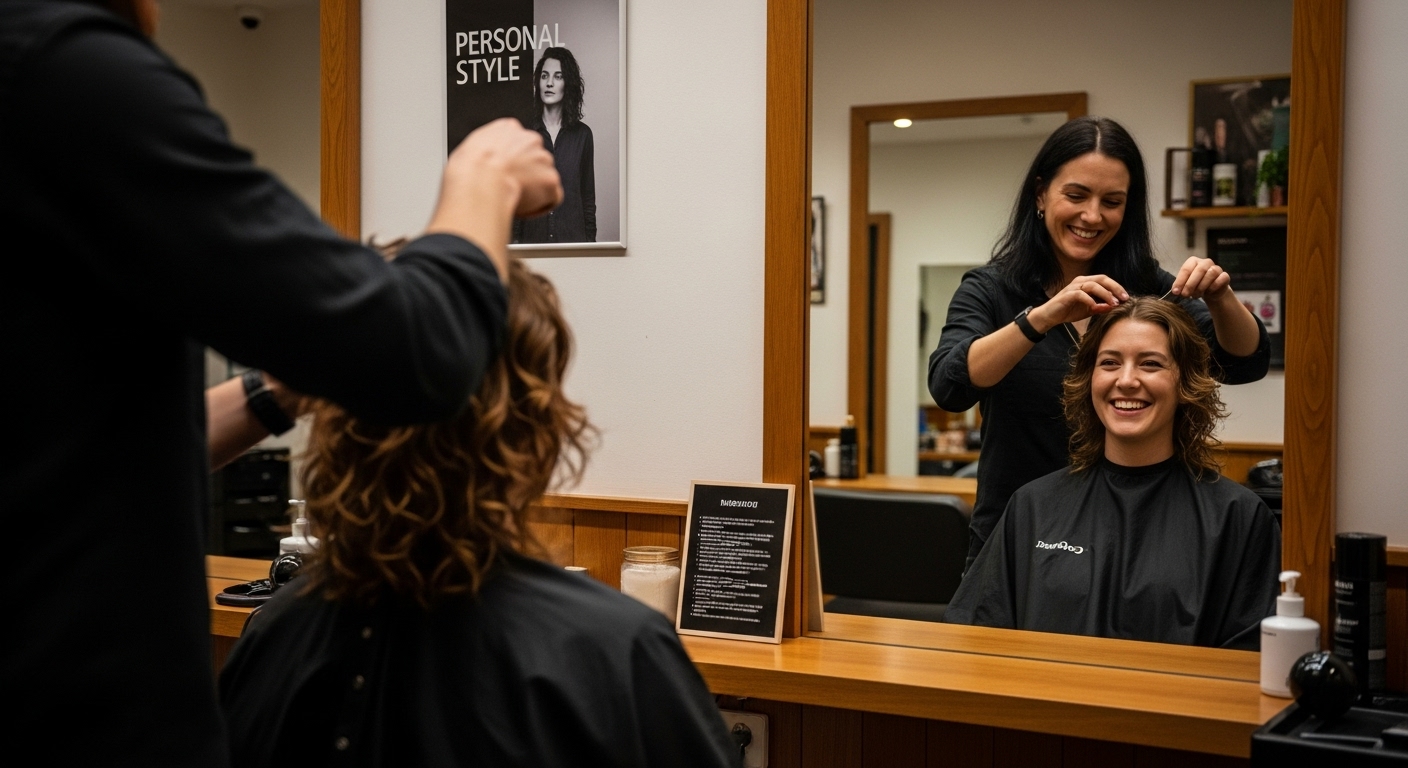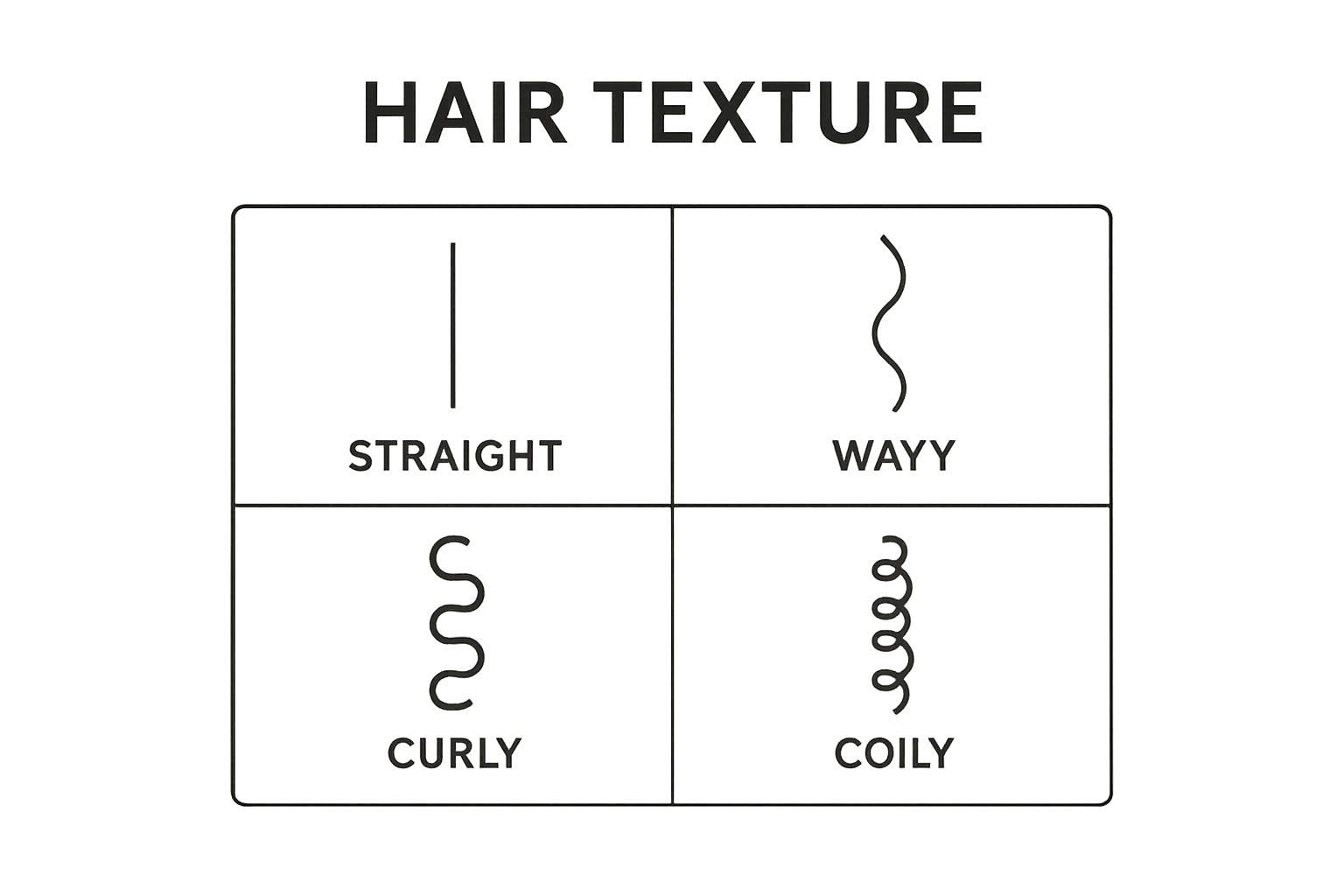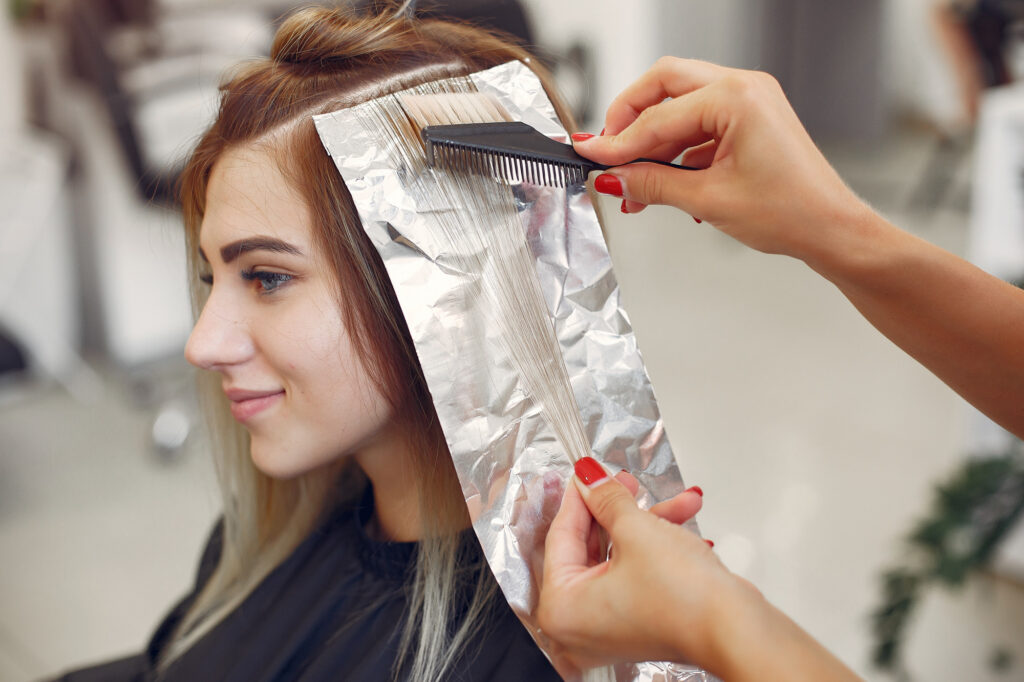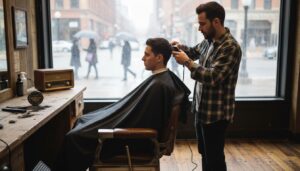Hair styling might sound simple, but dig deeper and you hit pure science and artistry. Keratin proteins are the secret behind every curl or wave, acting as the framework for hair’s strength and flexibility. Most people only notice the finished style in the mirror. But the real magic happens on the microscopic level, where each hair transformation rewires protein bonds to hold that perfect look.
Table of Contents
- The Fundamentals Of Hair Styling Techniques
- Why Hair Styling Techniques Matter For Personal Style
- Exploring Popular Examples Of Hair Styling Techniques
- The Science Behind Different Hair Styling Techniques
- Hair Styling Techniques For Various Hair Types And Textures
Quick Summary
| Takeaway | Explanation |
|---|---|
| Understand hair structure first | Knowing the cuticle, cortex, and medulla helps prevent damage during styling. |
| Personalized styling is essential | Tailoring techniques to individual hair types ensures optimal results and minimal damage. |
| Heat and chemicals affect hair differently | Controlled heat causes temporary changes, while chemicals alter hair structure permanently. |
| Optimize your tools and products | Choosing the right equipment and products based on hair characteristics enhances styling outcomes. |
| Hair reflects personal identity | Hair styling serves as a powerful medium for expressing individual personality and confidence. |
The Fundamentals of Hair Styling Techniques
Hair styling techniques represent a complex interplay of artistic skill, scientific understanding, and technical precision. Professional stylists recognize that successful hair transformation goes far beyond simple cutting or brushing techniques. Hair styling fundamentally involves manipulating hair’s natural structure to create desired aesthetic outcomes.
Understanding Hair Structure and Preparation
Before executing any styling technique, professionals must comprehend hair’s intricate biological composition. Hair consists of three primary layers: the cuticle (outer protective layer), cortex (middle layer containing pigment and keratin), and medulla (innermost layer). Research from the National Institutes of Health indicates that understanding these structural components is crucial for preventing damage during styling.
Key considerations for hair styling preparation include:
- Analyzing hair texture and natural wave pattern
- Determining hair’s current health and moisture levels
- Selecting appropriate styling tools based on individual hair characteristics
Essential Styling Principles
Successful hair styling requires mastering several foundational principles. Professionals must balance technical skill with creative vision, understanding how different techniques interact with various hair types. This involves precise sectioning, strategic tool selection, and knowledge of how heat, tension, and products influence hair’s appearance.
The most effective styling techniques integrate:
- Controlled heat application
- Strategic product selection
- Precise mechanical manipulation
Professional stylists view hair styling as both an art and a science, recognizing that each individual’s hair requires a personalized approach. By combining technical knowledge with creative interpretation, they can transform hair’s natural characteristics into stunning, personalized styles that reflect individual personality and aesthetic preferences.

Why Hair Styling Techniques Matter for Personal Style
Personal style transcends mere appearance it represents an intimate expression of individual identity and self perception. Hair styling techniques serve as powerful tools for transforming not just physical appearance but also communicating personal narrative and emotional confidence.
The Psychology of Hair Styling
Hair represents more than a biological feature it functions as a dynamic canvas of personal expression. Research published in the Journal of Social Psychology demonstrates that hairstyles significantly influence social perception and personal self esteem. Professional styling techniques enable individuals to craft visual representations of their inner personalities.
Key psychological impacts of strategic hair styling include:
- Creating a sense of personal empowerment
- Communicating professional and social identity
- Boosting individual confidence and self perception
Aesthetic and Cultural Significance
Hair styling techniques are deeply rooted in cultural traditions and contemporary fashion narratives. Different styling approaches communicate complex social signals ranging from professional competence to creative expression. Mastering appropriate hair styling techniques allows individuals to navigate diverse social environments with sophistication and intentionality.
Significant dimensions of hair styling impact encompass:
- Professional presentation and workplace perception
- Cultural and personal identity representation
- Adaptability across various social contexts
Ultimately, hair styling techniques represent a nuanced art form that bridges personal creativity with technical expertise. By understanding and applying sophisticated styling methods, individuals can transform their appearance while authentically expressing their unique personality and aesthetic vision.
Exploring Popular Examples of Hair Styling Techniques
Hair styling techniques represent a diverse landscape of creative expression and technical expertise, transforming hair into a dynamic canvas of personal aesthetic interpretation. Understanding the range of available styling approaches allows individuals to select methods that best complement their unique hair characteristics and personal style preferences.
Thermal Styling Techniques
Research from the National Institutes of Health highlights the complexity of thermal hair styling techniques. These methods involve using controlled heat to reshape hair’s natural texture, creating temporary or semi permanent style transformations. Professional thermal styling requires precise temperature management and protective product application.
Popular thermal styling techniques include:
- Flat iron straightening
- Curling iron wave creation
- Blow dry volumizing methods
Chemical and Structural Styling Approaches
Chemical styling techniques fundamentally alter hair’s molecular structure, offering more permanent transformations compared to heat based methods. These advanced approaches require specialized knowledge and professional expertise to ensure hair health and desired aesthetic outcomes.
Key chemical styling techniques encompass:
- Permanent wave treatments
- Chemical relaxation processes
- Keratin smoothing treatments
Professional stylists understand that successful hair styling transcends technical application. Each technique requires nuanced understanding of individual hair texture, potential chemical interactions, and desired aesthetic goals.
The following table compares the key features, mechanisms, and effects of thermal versus chemical hair styling techniques, as discussed in the article.
| Method | Mechanism | Duration of Result | Example Techniques | Key Considerations |
|---|---|---|---|---|
| Thermal Styling | Uses controlled heat to | Temporary | Flat iron straightening, curling iron, | Precise temperature control, use of |
| break and reform hydrogen | (style lasts until | blow dry volumizing | heat protectants to prevent damage | |
| bonds in keratin proteins | next wash or humidity) | |||
| Chemical Styling | Uses chemicals to break and | Permanent | Permanent wave, chemical relaxers, | Professional application, impact on |
| reform disulfide bonds in | (until new growth) | keratin smoothing treatments | hair health and structure | |
| hair cortex | ||||
| By combining scientific precision with artistic interpretation, skilled professionals can create personalized style transformations that authentically reflect individual personality and enhance natural hair characteristics. |
The Science Behind Different Hair Styling Techniques
Hair styling techniques are fundamentally complex biochemical transformations that interact with hair’s intricate molecular structure. Professional stylists leverage sophisticated scientific principles to manipulate hair’s natural characteristics, creating temporary and permanent aesthetic changes.
Molecular Structure and Hair Transformation
Research from Scientific Molecular Biology reveals that hair styling fundamentally involves altering keratin protein arrangements. Keratin proteins represent the primary structural component determining hair’s strength, flexibility, and potential for transformation. When subjected to specific thermal or chemical interventions, these proteins can be strategically reorganized to achieve desired styling outcomes.
Key molecular interactions during hair styling include:
- Breaking and reforming hydrogen bonds
- Modifying protein structural configurations
- Temporarily restructuring hair’s internal matrix
Thermal and Chemical Interaction Mechanisms
Different styling techniques produce unique molecular responses within hair’s structure. Heat styling creates temporary transformations by breaking hydrogen bonds, while chemical treatments produce more permanent alterations by modifying disulfide bonds. Understanding these scientific principles allows professionals to predict and control hair’s potential responses to various styling interventions.
Critical scientific considerations for hair styling encompass:
- Precise temperature control
- Chemical agent concentration
- Individual hair protein composition
Professional hair styling emerges as a nuanced intersection of scientific understanding and artistic interpretation. By comprehending the complex biochemical mechanisms underlying hair transformation, skilled stylists can create personalized aesthetic experiences that respect and enhance each individual’s unique hair characteristics.
Hair Styling Techniques for Various Hair Types and Textures
Hair diversity represents a complex spectrum of textures, requiring nuanced and personalized styling approaches. Professional stylists recognize that successful hair transformation depends on understanding and respecting each hair type’s unique structural characteristics and inherent styling challenges.

Categorizing Hair Texture Complexity
Research from the National Hair Care Institute reveals that hair textures fundamentally range across four primary classifications: straight, wavy, curly, and coily. Each hair texture demands specialized styling techniques that enhance natural characteristics while minimizing potential damage.
Key considerations for texture specific styling include:
- Understanding individual hair strand diameter
- Recognizing moisture retention capabilities
- Identifying inherent structural flexibility
Tailored Styling Strategies
Effective hair styling transcends generic approaches, requiring professional stylists to develop customized strategies that address unique hair texture requirements. Straight hair might benefit from volume enhancing techniques, while coily hair requires moisture rich protective methods that preserve natural curl patterns.
Critical texture specific styling principles encompass:
- Minimizing heat exposure for fragile textures
- Using appropriate detangling techniques
- Selecting products matching specific hair porosity
Professional hair styling emerges as an intricate art form that combines scientific understanding with creative interpretation. By recognizing and honoring each hair type’s distinctive characteristics, skilled stylists can transform individual hair textures into personalized, stunning expressions of personal aesthetic vision.
This table summarizes the main characteristics of four primary hair texture types and how each influences recommended styling approaches, synthesizing information from the article’s discussion.
| Hair Texture Type | Strand Diameter | Moisture Retention | Flexibility/Structure | Recommended Styling Focus |
|---|---|---|---|---|
| Straight | Fine/Medium | Low | High, less elasticity | Add volume, minimize heavy products |
| Wavy | Medium | Moderate | Flexible, easy to reshape | Define waves, control frizz |
| Curly | Medium/Thick | Low-Moderate | Prone to dryness, fragile | Enhance curl pattern, use moisturizing methods |
| Coily | Fine/Thick | High | Very flexible, prone to breakage | Use rich moisturizers, protective styling |
Elevate Your Look with Advanced Hair Styling Techniques at Joel C Ma Hair Studio
You have seen how understanding the basics of hair structure and expert styling techniques transforms not only your appearance but also your confidence. If you are searching for personalized solutions that respect your hair’s unique texture, or if you feel frustrated by generic cuts or styles that never quite work for you, you do not have to settle. At Joel C Ma Hair Studio, our passionate team brings over 25 years of artistry and science to every appointment. We specialize in custom approaches for all hair types, using advanced methods like controlled heat and strategic product selection discussed in the Understanding Examples of Hair Styling Techniques article.

Ready for a transformation designed entirely around you? Experience the difference of truly tailored service, from artistic cutting to the latest in color and styling. Book your personal style consultation now at Joel C Ma Hair Studio and see why we are San Diego’s destination for creative expression and healthy, beautiful hair.
Frequently Asked Questions
What are some common thermal hair styling techniques?
Thermal hair styling techniques include flat iron straightening, curling iron wave creation, and blow-dry volumizing methods. These techniques use controlled heat to reshape hair’s natural texture temporarily.
How do chemical hair styling techniques work?
Chemical styling techniques permanently alter hair’s molecular structure. Examples include permanent wave treatments, chemical relaxation processes, and keratin smoothing treatments. These methods require specialized knowledge to ensure hair health and desired aesthetic outcomes.
What factors should be considered when styling different hair types?
When styling different hair types, consider the hair’s texture, moisture retention capabilities, and structural flexibility. Each hair type has unique characteristics that necessitate specific products and techniques to achieve the best results.
How does heat styling affect hair’s molecular structure?
Heat styling affects hair’s molecular structure by breaking and reforming hydrogen bonds within the keratin protein. This creates temporary transformations in the hair’s shape. Understanding these interactions helps stylists control hair responses to heat application.





